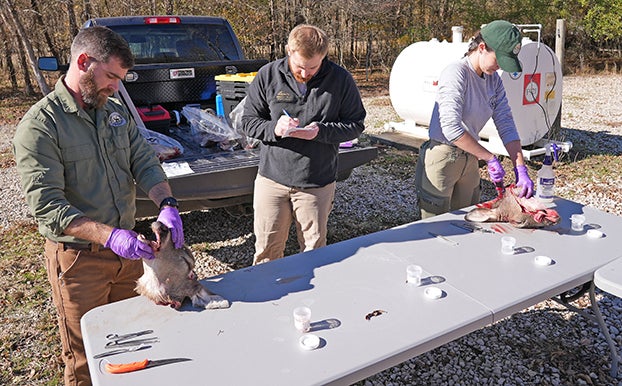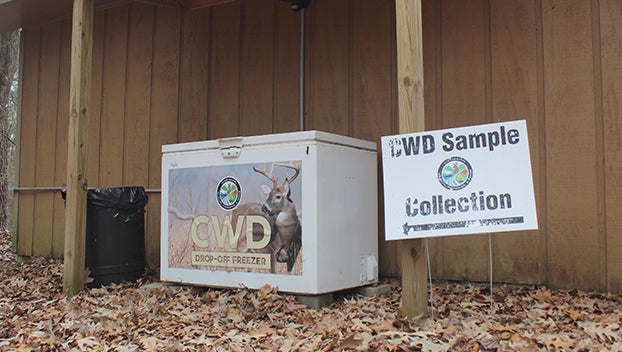Two more deer test positive for Chronic Wasting Disease in Tensas Parish
Published 11:22 am Tuesday, March 5, 2024

- Louisiana Department of Wildlife and Fisheries has detected 21 Chronic Wasting Disease positives since 2022. All have been in Tensas Parish. (Courtesy Photo | LDWF)
|
Getting your Trinity Audio player ready...
|
ST. JOSEPH, La — Louisiana Department of Wildlife and Fisheries reports two new Chronic Wasting Disease detections in Tensas Parish for the 2023-2024 hunting season. The detections bring Louisiana’s total CWD positives to 21.
Chronic Wasting Disease is a 100 percent always fatal disease caused by an infectious prion in deer and other members of the cervidae family. Louisiana detected the first positive in January 2022.
LDWF Deer Program Director Johnathan Bordelon said there are still some samples which do not have results yet. Hunter harvest samples were collected through February 15 on eligible properties.
Louisiana hunters submitted 2,376 samples in FY2024. Tensas Parish submitted 517 samples and Concordia Parish submitted 112 samples.
“All detections this season share the same distribution as detections from the previous season,” Bordelon said. “The current CWD control area appears to be well situated due to the current distribution of CWD detections.”
Louisiana’s prevalence rate for CWD seems to be pretty low at this point. Mitigation measures are most effective at low prevalence rates but continued surveillance is needed outside of the CWD control area, Bordelon said. Concordia Parish hunters outside of the CWD zone can help by submitting more samples for testing to ensure the disease is detected early.
It is unknown at this time if Louisiana caught CWD early enough to keep prevalence below 5 percent. Bordelon said following the best management practices for CWD regardless of CWD detection is always a good idea.
“Unfortunately, the disease spreads further and faster than the ability to detect CWD,” Bordelon said. “Adopting practices that limit artificial congregation and proper disposal methods can go a long way in reducing potential spread where surveillance has not yet detected the disease.”
Out of Louisiana’s 21 CWD detections, 15 have been bucks and six have been does. Bordelon reported one out of three detections have been a symptomatic deer. He said it highlights the value of people reporting symptomatic deer.
Symptoms of CWD in deer include drastic weight loss, loss of awareness and fear of humans and listlessness. Bordelon said not all symptomatic deer have been diagnosed with CWD but the percentage of symptomatic deer that are positive exceeds the rates of positives in non-clinical deer.
Future of CWD
Bordelon said there is some research emerging that would allow for environmental sampling to inform surveillance and highlight areas of disease risk . Mississippi State University is currently researching the use of diagnostic tests on scrapes to detect CWD prions in the environment. MSU detected CWD prions in a scrape in Claiborne County right across from Tensas Parish before a positive deer sample was detected.
Deer are one of the most pursued game animals in Louisiana. Bordelon said hunters spend more days in pursuit of deer than all other species combined and the license revenue derived from deer hunters is essential in funding management and conservation activities. CWD poses a challenge to deer management.
“The impacts to the resource are obvious with a disease that is 100 percent fatal,” Bordelon said. “Lower age structures, disease contaminated environments, highly disease prevalent herds and the unknown impacts to hunting efforts are concerning. Immediate challenges also include the redirection of management efforts to support surveillance and the added financial burden of CWD on resource agencies.”
Bordelon went to the Southeastern Deer Study Group from February 11 to February 14. He said practical CWD findings and other research on deer related topics were presented there.
Ongoing research on Chronic Wasting Disease is looking at the decontamination of instruments used in processing deer to environmental studies looking at the risk associated with feeders and the role of contaminated soils in potential disease spread.






